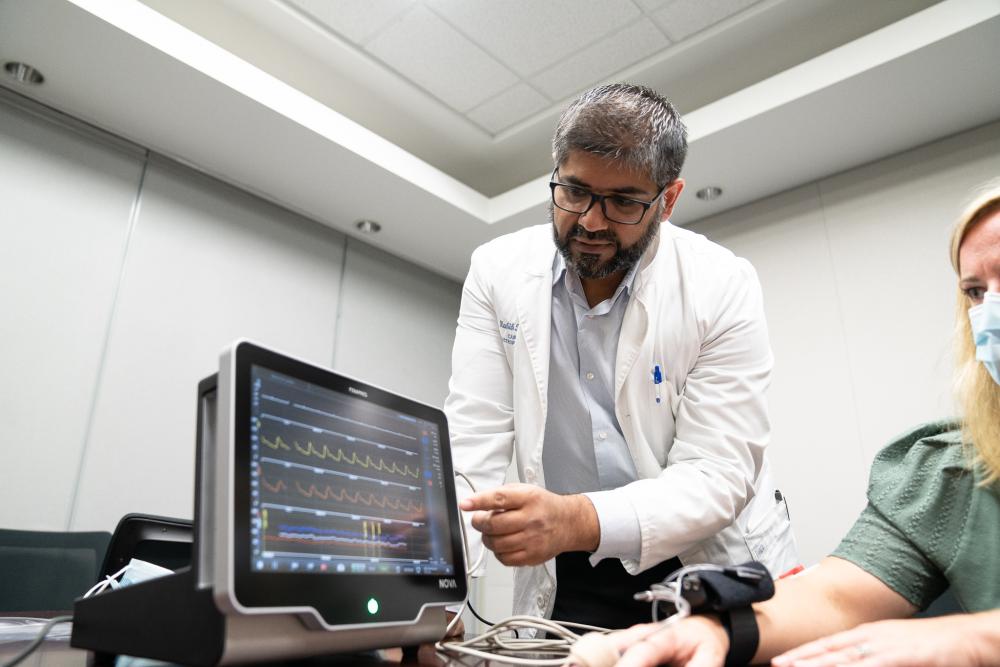
Dr. Habib Khan walks into the Cardiac Care Conference Room, having just come from clinic. He pulls a wheeled container behind him the size of a steam trunk. Off his left shoulder hangs an overstuffed laptop case. After some initial greetings and introductions, Dr. Khan, assistant professor of cardiology at Western University, starts setting up at the far end of the conference table.
He pops the latches on the protective case and pulls out a monitor slightly larger than a laptop. Next, he plunks down a jumble of wires, plugging some ends into the monitor and attaching others to our volunteer test subject. No sooner does Dr. Khan input the “patient’s” stats, when a series of blips bounce to life and scroll across the screen.
“This is the Finapres,” Dr. Khan says. He points at the digital readout and says things like “plethysmogram,” “ECG tracing” and “biphasic arterial pressure.”
"The clever thing about this machine is it constantly measures your blood pressure on a beat-to-beat variation,” Dr. Khan says. “You can use it for automatically calculating cardiac output, and has many applications in the acute and chronic management of heart failure, arrythmias or device implants.”
Dr. Khan says the Finapres can accurately measure the autonomic nervous system’s effect on the heart simply by measuring blood pressure. As a fast, precise and less invasive way of measuring cardiac output, there’s no need to have a cardiologist or anyone specifically trained to use the machine. While it’s not exactly plug and play, it’s not far off.
“This will replace more invasive measurements in places like the coronary care unit or in procedure rooms,” Dr. Khan says. “You just stick the finger pressure cuff on and you’re ready to go.”
From monitoring blood pressure responses in patients with advanced pacemakers, to the development of a syncope clinic, where he’ll study those who inexplicably lose consciousness, Dr. Khan eagerly points out its usefulness.
Then there’s research, which the electrophysiologist says is a completely different ball game. Investigations are underway to examine autonomic dysfunction in patients with cardiac arrest in hopes of better informing treatment. In addition, he’s out to find alternative methods of achieving the benefits of cardiac resynchronization therapy (CRT).
“I want to prove left bundle branch area pacing improves heart function similar, if not better, to CRT,” he says.
Having only joined London Health Sciences Centre in the last year from the UK, Dr. Khan finds himself awestruck at the generosity of donors, some of whom, helped fund the Finapres. But acquiring new technology and endorsing leading-edge research is all part of London Health Sciences Foundation’s master plan.
“I’ve never experienced fundraising efforts like what comes out of the Foundation. It’s absolutely incredible.”
As he packs up his equipment, Dr. Khan shares a couple lighthearted chuckles. He’s double- and triple-booked himself for meetings. The Finapres is needed elsewhere. He’ll have to shuttle it across town.
Maybe this is what Kurt Lewin meant when he said, “No research without action.”